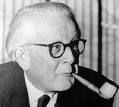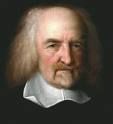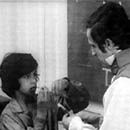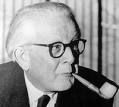![]()
![]()
![]()
Use LEFT and RIGHT arrow keys to navigate between flashcards;
Use UP and DOWN arrow keys to flip the card;
H to show hint;
A reads text to speech;
53 Cards in this Set
- Front
- Back
- 3rd side (hint)
|
What is a child?
|
Lots of ways to define a child
- UNCRC - anyone under 18 - childhood means different things to different people - societies make laws defining childhood e.g. voting rights, leaving school |
|
|
|
Social constructionist approach to studying childhood
|
Looks at IDEAS not facts, examines beliefs, images, studies representations and discourses
|
|
|
|
Scientific approach to studying childhood
|
Seeks practical knowledge about children, by devising theories and testing them through observation and experimentation
|
|
|
|
Applied approach to studying childhood
|
Looks at ways children are defined in terms of the law & children's rights, policies & professional practices
|
|
|
|
PASS THROUGH STAGES
Each stage lays the foundation for the next Everyone goes through the same stages in same order The child is an active learner. Basically they have to do it on their own, they can’t be told (see hint for names of Stages) |

PIAGET's theory of cognitive development
|
Sensory motor - 0-2 years
Pre-operational - 2-6 years Concrete operational - 6-12 years Formal operational - 12+ |
|
|
Moral development passes through stages. To reach stage 6 a child has to pass through 1-5
|

KOHLBERG's theory of MORAL development
|
Stage 6 - being good is defined by your own conscience
|
|
|
Children who commit crimes
SCIENTIFIC APPROACH |
Moral judgements universal. Moral development progresses through 6 stages. Progression influenced by upbringing & their culture.
|
p. 17
|
|
|
Children who commit crimes
SOCIAL CONSTRUCTIONIST APPROACH |
Challenges the idea that moral values can be objectively defined and measured
|
p. 29
|
|
|
SOCIAL CONSTRUCTION OF CHILDHOOD
Historical changes |
Ideas about children change depending on social, cultural & historical context. e.g 50's - children seen not heard, now people very interested in what children have to say.
|
p. 46
|
|
|
SOCIAL CONSTRUCTION OF CHILDHOOD. Examples of cultural differences
|
When life begins - Christians at conception; Waiwai 3 yrs old soul becomes complete.
Japanese culture - children seen as extension of parents. |
p.52
|
|
|
Pioneered idea that childhood is a social construction in his book 'Centuries of Childhood' 1962
|

PHILIPE ARIES
Who is he? |
p.58
|
|
|
PHILIPE ARIES THEORIES
|
Claimed childhood invention of 16-17th century - did not exist before then.
|
p. 58
|
|
|
PHILIPE ARIES - CRITICISM OF THEORY
|
Relied too heavily on paintings, which did not take into account lives of children - instead used symbolism.
Ignored other sources e.g. medical books on children's illnesses. Legal system set ages for criminal responsibility. Teachings of the Church on role of children. |
p. 59
|
|
|
2 non-Western constructions of childhood
|
Japan - children seen as extension of parents - not able to exist without parents.
Waiwai - child in own right from 3 years old |
p. 66
|
|
|
Examples of different ways people talk about childhood
|
CONTRADICTORY - pure, innocent, full of potential OR corrupt& bestial
|
|
|
|
Children inherently good. Naturally innocent. If behave badly it is because they have been corrupted.
|

ROMANTIC DISCOURSE - time of INNOCENCE
(Jean-Jacques Rousseau - 1762 - Emile) |
p. 66
|
|
|
Children innately evil. Could be enlightened through discipline & education.
|

PURITAN DISCOURSE - time of EVIL
(Thomas Hobbes - 1600's) |
p. 63
|
|
|
Children 'blank slate' - experience shapes the child. Need to be shaped by environment and education.
|

TABULA RASA - time of BECOMING
(John Locke- 1690) |
p. 64
|
|
|
Ways Western construction of child have been globalised
|
Every country except US & Somalia has signed & ratified the UNCRC agreeing that 'a child means every human under 18 years' PROBLEMATIC - not all societies treat children as children up to that age
Expectations of child development based on Western notions. Ideas that children should not work. PROBLEMATIC - many in South work through necessity & tradition. Aid agencies use images of starving children in Africa, reinforces stereotype of helpless people. |
p. 71
|
|
|
Ways Western construction of child have been globalised
|
Every country except US & Somalia has signed & ratified the UNCRC agreeing that 'a child means every human under 18 years' PROBLEMATIC - not all societies treat children as children up to that age
Expectations of child development based on Western notions. Ideas that children should not work. PROBLEMATIC - many in South work through necessity & tradition. Aid agencies use images of starving children in Africa, reinforces stereotype of helpless people. |
p. 71
|
|
|
DR ITARD's experiments on 'WILD BOY of AVEYRON' - tried to reverse affects of social deprivation
|

Historical roots of developmental approach to childhood
|
p. 86
|
|
|
Global influence of developmental approach
|
Western beliefs based on ages and stages spread globally through school systems, experts influence, UNICEF & UNCRC (1989)
|
p. 92
|
|
|
Key concepts in study of development
|
Charting growth & change
Charting intellectual & social understanding |
p. 94
|
|
|
Examples of observational & experimental studies
|
Charles DARWIN - observed & experimented on baby son - 1840's
Arnold GESSEL - observation dome, USA 1911 John BOWLBY - observed children deprived of mother (orphans/hospitalized) 1930's |
p. 104
|
|
|
PIAGET universal staged process
|
Theory that ALL children progress through STAGES of development (originated from Friedrich FROEBEL 1887).
Piaget endorsed progressive, child-centered education. |
p. 108
|
|
|
1. Conservation of liquids
2 beakers filled to same level, 1 is poured into another different shaped beaker - is amount more, less or same? 2. 3 mountains task Two intersecting 'walls'. Figures of boy & policemen placed at different points, child asked to hide boy from both policemen. |

1970's experiments that challenge PIAGET's theory
|
Different results to Piaget's because PRESENTED IN A WAY THAT WAS MORE RELEVANT TO CHILDREN p. 111
|
|
|
ARGUMENT AGAINST Universal Stage Theory (generalised progression through stages)
|
Children's reasoning varies according to way task is presented & way it is understood.
|
p. 112
|
|
|
Challenged PIAGET's STAGE THEORY. Believed development is embedded in social and cultural contexts of child's life
|

LEV VYGOTSKY
|
p. 113
|
|
|
JUDY DUNN's observations & experiments (1998)
|
Studied 2nd born children in their 2nd & 3rd years in their own homes. By studying children in familiar settings she gained stronger evidence of their social competence (empathy / moral understanding)
|
Reading B p. 127
|
|
|
WHY developmental research & theories are a SOCIAL CONSTRUCTION of childhood
|
Charting children's development relating to age is distinctive to modern societies. Children are constructed as 'in a process of becoming' rather than persons in their own right.
|
p. 120
|
|
|
1948 UN Declaration of Human Rights asserted everyone has same rights simply because they are human
|

Concept of human rights
|
p. 137
|
|
|
Ways rights can be complex & contradictory
|
Women not given full rights in some countries. E.g. Saudi Arabia - religious reasons
Local cultural practices conflict with notions of universal rights e.g Female/male circumcision, child marriage, cannot be condemned if part of a culture. Based on Western idea that each human is autonomous individual. This idea does not exist in countries such as Japan, so hard to implement. |
p. 139-140
|
|
|
PROVISION - for growth & development (food, housing, education)
PREVENTION - from harm (abuse) PROTECTION - against exploitation, in times of conflict PARTICIPATION - in decisions made on their behalf. Right to hold an opinion. |

Main provisions of UNCRC 1989
FOUR P's |
p. 144
|
|
|
Problem with PARTICIPATION RITES?
|
Issues about children's competence. Hard to know when children are physically, mentally & emotionally competent to participate fully.
|
p. 151
|
|
|
Stresses Rights and RESPONSIBILITIES of the child.
Sets out duties parents have to children, and child's duties to parents. Children expected to care for families, communities & Africa. This focus is non-existent in UNCRC. |

Main provision of AFRICAN CHARTER 1990
|
p. 161
|
|
|
Effects legislation is having on children's lives
|
Can involve them having too much responsibity that they do not want (e.g decision to decide which parent to live with after divorce)
Policies had adverse affects on children, even when benefited adults (e.g. reduction in wells meant younger children sent to collect water) |
p. 167
|
|
|
Main BIOLOGICAL differences between male & female
View that gender differences are 'natural' and fixed. |
Determined by one pair of 23 chromosomes.
XX pair - usually female XY pair - usually male. Some people born with gender wrongly assigned. |
p. 188
|
|
|
SOCIAL CONSTRUCTIONIST APPROACH to GENDER
View that gender is moulded by society's attitudes. |
A child's sex influences how they are treated by society. They acquire gender through the way they are treated.
Children adapt into gender roles. |
p. 185
|
|
|
3 lines of RESEARCH into ACQUIRING GENDER
|
REWARDS & PUNISHMENTS - Approval for some kinds of play, disapproval of others (e.g. boys discouraged from playing with dolls / girls from jumping & climbing)
OBSERVATION, IMITATION & MODELLING - boys model on men, girls on women SOCIAL UNDERSTANDING - children make sense of gender as an aspect of their social and cultural world |
p. 193-7
|
|
|
THEORY OF DISCURSIVE POSITIONING
|
Gendered identities not fixed but fluid. Changes in attitudes can result in different treatment e.g girls not expected to do as well as boys in Maths, so treated as less capable. When this attitude changed girls did better.
|
p. 200
|
|
|
Consequences of gender on childhood
|
Selected infanticide - 68m missing girls in India & China
South - girls receive less education than boys, so limits their opportunities North - girls outperform boys at school, but this does not result in higher earnings or more powerful positions. |
p. 210
|
|
|
CONCEPT OF CHILDHOOD INNOCCENCE
|
Lack of knowledge, particularly sex & violence
Lack of experience of the adult world, esp sex, money, work, grief or hatred Lack of evil or sin Synonymous with purity Lack of knowledge of economics & consumerism Inherent to children |
p. 230
|
|
|
Ways innocence is evident in text and visual representations (Contemporary & Historically)
|
Contemporary: Images of innocence used in ad campaigns e.g Barnardo's, Evian, Peugeot. Children presumed to become less innocent as they grow older.
Historically: Blake's poem 'Songs of innocence & experience', Henry Mayhew's 'Watercress Girl' expressed shock at 'lost childhood'; paintings of children with lambs & at one with nature. |
p. 228-235
|
|
|
Practical consequences for children when they are presumed innocent
|
Expected to be sexually innocent so assumed to be something 'wrong' if they are not. Sexual activity prohibited until 16.
Reaction to children who commit crimes - disrupts notion of childhood innocence - treated as evil delinquents by media |
p. 246 & p. 254
|
|
|
Negotiation between adults and children over sexuality
|
Parents mindful of children's sexual awareness. Try to regulate sexual activity based on view of appropriate sexual behaviour. Seek to protect them from abuse.
|
p. 239
|
|
|
All children are inherently sexual but it is repressed by society
|

What did Sigmund FRAUD argue?
|
p. 238
|
|

What did Michel FOUCAULT argue?
|

Wrote : History of Sexuality 1976.
Argued that repressing sexuality had had opposite affect. Children have an increased awareness of sex. Refers to this as 'discursive explosion' |
p. 241
|
|

EVIDENCE of sexualisation of girls
|

LOLITA - explores unstable boundary between innocence & experience
PAINTED BABIES - young girls dressed and acting in what could be viewed as provocative SEXUALISED girls clothing |
EYE OF BEHOLDER is responsible for making interpretations
p. 246 |
|
|
How were child killers treated in Norway?
|
Seen as innocent because they were children (5 years old)
|
p. 255
|
|
|
How are child killers treated in the UK?
|
Killers of James Bulger demonized, not innocent and therefore not treated as children.
|
p. 255
|
|
|
What can science tell us about children's ability to reason & make moral choices at different ages?
|
PIAGET - 3 mountains experiment - Children younger than 7-8 unable to imagine scene from another persons point of view - evidence of egocentric view
|
|
|
|
PIAGET - 3 mountains task - children gain ability to see another persons perspective - age 7-8
KOHLBERG - Stage theory - moral development passes through 6 stages - children must pass through 1-5 to reach 6 KOHLBERG other studies - childrens moral development influenced by upbringing & culture |

What can science tell us about children's ability to reason & make moral choices at different ages?
|
|
|
|
What do social constructionist mean when they talk about 'discourses of childhood'?
|
How childhood is understood - views vary in different societies & according to economic circumstances, family values, laws, education, work, moral codes etc.
|
|

